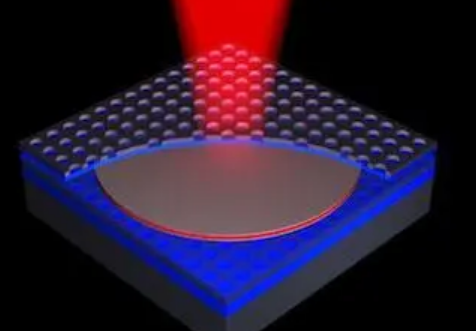Silicon Photonics Will Become Key to Semiconductor Future Development
In recent years, with the rise of AI and 5G technologies leading to increasing computational demands, Silicon Photonics technology has once again become a focal point of discussion in the semiconductor industry.

AMEYA360 Perspective:
Rewriting Semiconductor Development Rules with Silicon Photonics
Since the development of the semiconductor industry, the industry’s trajectory has largely followed the development predicted by Gordon Moore – roughly doubling the number of transistors that can be accommodated on an integrated circuit approximately every two years. However, as chip sizes continue to shrink, chip architecture design is gradually being challenged. Semiconductor manufacturers, including TSMC, Samsung, and Intel, are striving to break through Moore’s Law as their goal. Others have publicly announced their focus on mature processes (the industry divides at 7nm, with 7nm and below considered advanced processes) and optimization of existing technologies.
However, even as manufacturers push the boundaries of Moore’s Law, leading to increased transistor density per unit area, signal loss issues inevitably arise during signal transmission since chips rely on electricity to transmit signals. Despite the increased transistor count, power consumption problems persist. Silicon Photonics technology, which replaces electrical signals with optical signals for high-speed data transmission, successfully overcomes this challenge, achieving higher bandwidth and faster data processing. With this approach, chips do not need to cram more transistors per unit area or pursue smaller nanometers and nodes. Instead, they can achieve higher integration and performance on existing processes, further advancing technology.
Optimistic about Silicon Photonics Technology, but Breakthroughs Will Take Time
Currently, Silicon Photonics technology still faces various challenges, including alignment and coupling, thermal management, modulation and detection, expansion and integration, among others. Significant breakthroughs are unlikely in the short term, and major global manufacturers are still in the early development stages. In Taiwan, recent reports suggest that TSMC is actively venturing into Silicon Photonics technology. While TSMC has not officially confirmed this news, during the Silicon Photonics International Forum, a senior vice president from TSMC clearly stated, “If a good Silicon Photonics integration system can be provided, it can address the key issues of energy efficiency and AI computing power. This could be a Paradigm Shift, and we might be at the beginning of a new era.”
This suggests that TSMC is optimistic about the development of Silicon Photonics technology. Although Taiwanese companies have not formally announced their entry into the Silicon Photonics field, it is expected that with the explosive growth in demand for data transmission, storage, and computing driven by AI technology, Silicon Photonics will undoubtedly be a critical technology for future semiconductor development.
在线留言询价
- 一周热料
- 紧缺物料秒杀
| 型号 | 品牌 | 询价 |
|---|---|---|
| MC33074DR2G | onsemi | |
| RB751G-40T2R | ROHM Semiconductor | |
| CDZVT2R20B | ROHM Semiconductor | |
| BD71847AMWV-E2 | ROHM Semiconductor | |
| TL431ACLPR | Texas Instruments |
| 型号 | 品牌 | 抢购 |
|---|---|---|
| TPS63050YFFR | Texas Instruments | |
| IPZ40N04S5L4R8ATMA1 | Infineon Technologies | |
| STM32F429IGT6 | STMicroelectronics | |
| ESR03EZPJ151 | ROHM Semiconductor | |
| BU33JA2MNVX-CTL | ROHM Semiconductor | |
| BP3621 | ROHM Semiconductor |
- 周排行榜
- 月排行榜
AMEYA360公众号二维码
识别二维码,即可关注


请输入下方图片中的验证码:






















